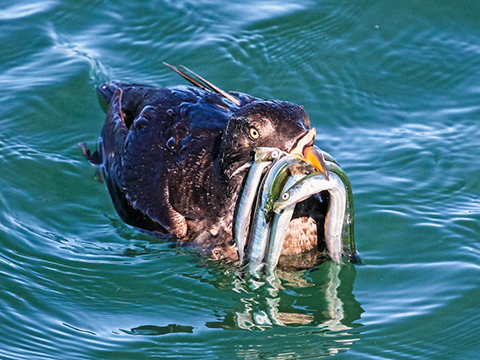David Suzuki's Blog, page 18
January 25, 2017
How to be a Bee City

Did you know that the third week in June is International Pollinator Week? (Credit: Penel Woods and mural by Nick Sweetman)
Did you know any Canadian city can be an official Bee City?
I quizzed Shelly Candel, director of Bee City Canada to get the buzz:
What is a Bee City?
A Bee City formally declares that it will conserve the places that pollinators already call home. It commits to planting more habitat in public places -- municipal grounds, parks, ravines and river banks. It values habitat creation and conservation. It encourages residents to plant pollinator gardens. It celebrates citizens' efforts to share their love for all pollinator species.
What are the benefits?
Becoming a Bee City sends a powerful message that pollinators are important. Together, municipalities and residents can play a crucial role in reversing the alarming rate of their decline. Over time, Bee Cities become more beautiful with diverse native plants -- flowers, shrubs and trees. Bee Cities are in bloom from early spring to late fall to provide food for thousands of pollinator species -- bees, butterflies, other insects and birds.
Save the date: The third week in June is International Pollinator week!
How can my city become a Bee City?
Step 1: Build a team. Contact movers and shakers -- local master gardeners, beekeepers, teachers, non-profit groups, birders and community garden clubs.
Step 2: Find a city council champion. (Lindsay: Read How to write a letter to your mayor.)
Step 3: Fill out this application. Work with city staff to write up your resolution.
Step 4: Present and adopt the resolution before city council, have the mayor sign it and become a Bee City!
Toronto, with 44 city councillors, completed these steps in three months.
Can schools or universities take part?
Yes! Review the application for a school or a campus. In Ontario there are now two Bee Schools and one Bee Campus. Many more are in the application process.
How many Bee Cities in Canada?
Bee City Canada started in spring, 2016. Toronto, Ont. and Chestermere, Alta. were our first. By summer's end, we expect at least four more, including Kamloops, B.C. Sister organization Bee City USA has 36 and counting!
Will you take steps to have yours become a Bee City? What's your city already doing to help pollinators?
Sincerely,
Lindsay Coulter, a fellow Queen of Green
Hey! Want more DSF? Join David Suzuki on Facebook

January 24, 2017
Pipeline approval is a missed opportunity
VANCOUVER -- The U.S. government's decision today to approve the Keystone XL and Dakota Access pipelines represents a missed opportunity for the country to lead on clean energy. "If the world is serious about addressing climate change, we can't continue to build long-lived fossil fuel infrastructure," David Suzuki Foundation CEO Peter Robinson said. "These projects lock us into increased use of carbon fuels while hindering the urgently needed transition to clean energy."
Beyond their climate impacts, the pipelines threaten Indigenous water resources and land. "Indigenous rights must take priority over short-term oil-industry profits," Robinson said. "We stand with the community of Standing Rock, which is opposing the Dakota Access pipeline. Approving these pipelines is short-sighted and will affect not only the environment, but the health of communities."
"Climate change has no borders," Robinson said. "Canada doesn't need to follow U.S. President Donald Trump's direction on this pipeline decision. We can lead on one of the fastest-growing industries in the world: renewable energy."
- 30 -
Media contact:
Emily Fister, Climate Change & Clean Energy Communications Specialist
David Suzuki Foundation
Phone: 604-374-4102 (Vancouver)
Hey! Want more DSF? Join David Suzuki on Facebook

U.S. approves Keystone XL and Dakota Access pipelines. Tell Canada to say "No way!"

(Credit: Climate solutions and Justicee via Flickr)
**UPDATE: Minister Carr's mailbox is full! Please try again in the morning.**
We won't be able to realize the full potential of Canada's renewable energy and clean technology industries unless we stop supporting new fossil fuel infrastructure.
U.S. President Donald Trump's decision to approve the Keystone XL and Dakota Access pipelines was met with support by our federal government. Natural Resources Minister Jim Carr said the approvals are a positive step for Canada and for deepening our relationship with the U.S. on the energy file.
We disagree. We don't believe Canada should deepen its relationship with the new U.S. administration on the energy file until we have seen a solid environmental regulatory regime and climate change plan in place.
SPEAKING POINTS
Tell them:
Who you are and a bit about yourself (you are a mother, concerned citizen, scientist, immigrant, Indigenous person, voter, etc.).
Why climate change concerns you (impacts from increased extreme weather, air quality, sea-level rise, extinctions, climate refugees).
We won't be able to realize the potential of Canada's renewable energy and clean technology industries unless we stop supporting new fossil fuel infrastructure like the Keystone XL and Dakota Access pipelines (as well as domestic pipelines like Kinder Morgan and Energy East).
These pipelines pose extreme threats to Indigenous water resources and land. Indigenous rights must take priority over short-term oil industry profits. We support the community of Standing Rock, which is opposing the Dakota Access pipeline.
Leave your name and phone number, and ask him to reply to confirm whether he will commit to supporting renewable energy instead of new oil pipelines.
Tips for the call
Use a headset or hands-free -- This will give you both hands to take notes.
Be polite but firm -- MPs are our elected representatives. They will likely be happy to hear from engaged constituents. Be polite and direct. Make sure to ask for a response.
Hey! Want more DSF? Join David Suzuki on Facebook

January 20, 2017
David Suzuki Foundation offers opportunity to discover Mexican monarch butterfly sanctuary
MONTREAL -- As North American monarch butterfly populations decline, the David Suzuki Foundation is launching a Monarchs in Mexico contest. Citizens throughout Canada will have the chance to win a one-of-a-kind trip to discover a magnificent refuge for this species. The monarch was designated as endangered in November.
Winners will have 10 days to discover Mexico's beauty and observe monarch butterflies in their natural habitat. After visiting the historical heart of Mexico City, winners will enjoy an awe-inspiring spectacle of millions of butterflies in flight at the El Rosario and Sierra Chincua sanctuaries, declared a UNESCO World Heritage Site in 2008.
The endangered monarch is a Canadian icon
The contest is part of the Butterflyway Project launched by the Foundation last spring to raise awareness among Canadians of the threats facing the monarch, including climate change, habitat reduction and pesticide use. In agriculture, widespread herbicide use reduces the number of plants monarchs rely on, including flowering plants adult butterflies need for nectar and milkweed their caterpillars depend on for food. Milkweed used to be common in North America, but has now been eradicated from many fields, declining by as much as 58 per cent in some regions. Experts on the Committee on the Status of Endangered Wildlife in Canada say every generation of migrating monarchs depend on milkweed. Planting milkweed helps the monarch population, which hit a historical low of barely 33.5 million in 2013, compared to the annual average of 350 million a year over the past 15 years. Thanks to the efforts of citizens, more than 5,000 plants and 20,000 seed packs have been planted in Canada in 2016, as part of the Butterflyway Project.
"This steep decline in monarch populations over the past few years has raised concerns about the impact humans have on biodiversity, on which we all depend," says David Suzuki Foundation Quebec science projects manager Louise Hénault-Ethier. "A 2016 study published in Scientific Reports estimates that the monarch population in North America has a probability of declining up to 57 per cent over 20 years. Fortunately, there are solutions, but they require cooperation between North American governments, scientists, non-governmental organizations and citizens everywhere, including in Quebec. The first step could simply be discovering the wonder of the monarch. We hope this contest will encourage people to learn more about this butterfly and the importance of protecting it."
Butterflyway Project: Second edition will take off in 2017
The second edition of the Butterflyway Project will be announced in early March with a range of suggested actions that will enable people to help save an iconic Quebec species -- including buying milkweed, spearheading political advocacy and taking part in an ambassador program to create a butterfly effect to protect the monarch locally.
Contest information
The contest will run from January 18 to 29, 2017, and is open to all Canadian citizens or permanent residents of Canada. The prize includes a 10-day trip for two to Mexico, including return flight to Mexico City* from the winner's city of residence, and accommodations.
The winner will be drawn at random and contacted on January 30, 2017, between 12 p.m. and 2 p.m. EST, through the contact information indicated on the entry ballot. The winner will have two hours to confirm whether he or she accepts the prize.
For more details, go to http://action2.davidsuzuki.org/mexico
The Monarchs in Mexico contest is presented by Nature's Way and Cascades, in partnership with Espace pour la vie, Aeroplan and G Adventures.
_*The Foundation would like to point out that GHG emissions from the return flight to Mexico will be offset by the purchase of carbon credits. _
- 30 -
Information and interview requests:
Manon Dubois, Communications Director (Quebec)
David Suzuki Foundation
514-679-0821, mdubois@davidsuzuki.org
National program partners: 
Contest partners: 
Hey! Want more DSF? Join David Suzuki on Facebook

How to go zero waste
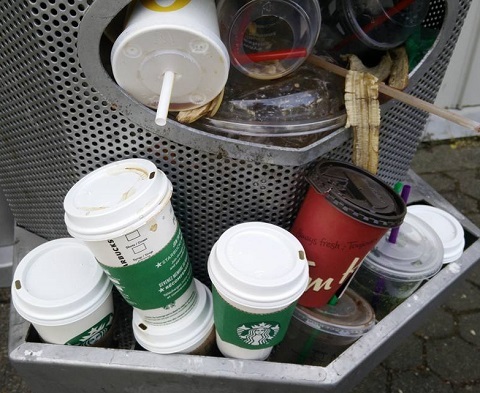
Everything here belongs in a bin, not the garbage, with the exception of straws. (Credit: Lindsay Coulter)
Garbage day needs another name...
Bins in every colour help us sort organics from recyclables from items landfill-bound. And then there are the zero wasters who only fill a mason jar with trash each year!
I aspire to zero waste. I'm not there -- yet. But these tips help me get closer:
Tip 1: Use a hankie and blow off facial tissue.
Tip 2: Choose reusable produce bags instead of plastic.
Tip 3: Choose cloth diapers AND make your own baby wipes and solution.
Tip 4: Compost.
Tip 5: Have an eco-friendly period.
Tip 6: Consume fewer toys: trade instead.
Tip 7: Attend a Repair Café!
Tip 8: Don't treat "best before" as "expiry" dates.
Tip 9: Create an "Eat-me-first bin" for your fridge.
Tip 10: Shop in thrift and consignment stores.
Tip 11: Reuse silica gel packs (part one and part two).
Tip 12: Make a "waste-less air travel kit"
Tip 13: Throw a "green" birthday party!
Tip 14: Use reusable wool dryer balls instead of dryer sheets.
Tip 15: Pack litter-less lunches.
Tip 16: Compost dog doo.
Tip 17: Pack smart camping.
Already doing all those? Then try these:
Pick up other people's trash.
Recycle less!
Compost less (make less food waste).
What tips did I miss that have helped you on your zero-waste journey?
Sincerely,
Lindsay Coulter, a fellow Queen of Green
Hey! Want more DSF? Join David Suzuki on Facebook

January 19, 2017
Anthropocentric view ignores crucial connections

(Credit: Moyan Brenn via Flickr)
For decades, scientists have warned that we're on a dangerous path. It stems from our delusion that endless growth in population, consumption and the economy is possible and is the very purpose of society. But endless growth is not feasible in a finite biosphere. Growth is not an end but a means.
Humans are one species among countless others to which we are connected and on which we depend. Viewed that way, everything we do has repercussions and carries responsibilities. That we are part of a vast web is a biocentric way of seeing that we've followed for most of our existence. But in assuming the mantle of "dominant" species, we've shifted to thinking we're at the centre of everything. This anthropocentric perspective leads us to imagine our needs and demands supersede those of the rest of nature.
The failure to see our interconnectedness and interdependence is most striking in the way we manage government affairs. Forestry, environment and fisheries and oceans ministers' priorities are not to protect forests, the environment or fish and oceans, but to rationalize our actions and ensure that whatever we do benefits us.
In an anthropocentric world, we attempt to manage important factors through separated silos, shattering the sense of interconnection. We draw arbitrary lines or borders around property, cities, provinces and countries and try to manage resources within those boundaries. But salmon may hatch in B.C. rivers and migrate through the Alaskan panhandle along the coasts of Russia, China, Korea and Japan before returning to their natal streams. To whom do they "belong"?
How do we manage monarch butterflies born in Ontario that travel through numerous U.S. states into Mexico? Grizzly bears are protected as an endangered species in the U.S. but can be shot if they cross into Canada.
This absurd disconnection was illustrated when provincial first ministers and the federal government met to discuss climate change and health in December. It was an opportunity to recognize the enormous health implications and costs of climate change. Instead, talks proceeded as if the two subjects were unrelated.
The repercussions of a mere 1 C rise in global average temperature over the past century have been enormous. In 2015, climate negotiations in Paris were meant to signal a shift away from fossil fuels to prevent an increase of more than 2 C this century. Though the Paris commitment dictates that most known deposits must be left in the ground, governments like Canada's continue to support new pipelines and continued exploitation of fossil fuel reserves. Efforts by Canada, the U.S. and other major greenhouse gas emitters have been so minimal that scientists now openly discuss global temperature rises of 4 to 6 C this century. Because we can't seem to curb our emissions, many suggest we must geoengineer the planet!
As top predator, our species remains dependent on clean air, water and soil and biodiversity, making our ability to survive catastrophic planetary disruption questionable. Surely that should be a top line in discussions about health.
At the December meeting, having ignored the effects of climate change on health, our political representatives simply assumed health-care costs will rise steadily (they have) without attempting to understand the cause. Instead, they focused on provincial demands for and federal resistance to annual payment increases. But health costs can't continue to rise indefinitely.
We are accelerating degradation of the very source of our lives and well-being -- air, water and soil -- through massive use of pesticides, artificial fertilizers and literally tens of thousands of different molecules synthesized by chemists. Scientists suggest up to 90 per cent of cancer is caused by environmental factors. It's lunacy to ignore widespread and pervasive pollution as a primary health hazard. What we put into the biosphere, we put into ourselves.
If we want to keep health costs from rising, we should focus on keeping people healthy rather than dealing with them after they're sick. The highest priorities must be to stop polluting the biosphere and clean up what we've already dumped into it. Most importantly, we have to rid ourselves of anthropocentric hubris and return to the biocentric view that we are biological beings, as dependent on the rest of nature for our survival and well-being as any other.
Hey! Want more DSF? Join David Suzuki on Facebook

Speak out for world-class seabird habitat
Barack Obama, Climate-Optimist-in-Chief
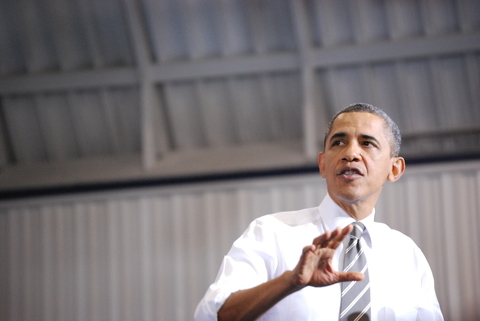
(Credit: Daniel Borman via Flickr)
The most exhilarating aspect of Barack Obama's recent article in the prestigious journal Science, "The irreversible momentum of clean energy", is the deep optimism it embodies. Published on January 9 -- just a week-and-a-half before the end of his presidency -- it provides consoling words to a world greatly in need of consolation.
The piece has two audiences: Donald Trump and members of the public who worry climate action will come to a halt. It warns the former that if he tears up the Paris Agreement and ramps up coal, he'll harm domestic business and employment and threaten treasury income. Obama writes, "evidence is mounting that any economic strategy that ignores carbon pollution will impose tremendous costs to the global economy and will result in fewer jobs and less economic growth over the long term." He cites economic modelling suggesting warming of 4 C could result in an annual loss of $340 to $690 billion in U.S. government revenue. He points out that solar and wind companies employ more than twice as many Americans as the coal power sector (some 360,000 versus about 160,000). The message to Trump: If you want to support American workers and businesses, become a clean-energy champion.
The message to nervous citizens is one of reassurance. Trump's rhetoric notwithstanding, the new president's ability to undermine renewables is limited. The numbers are too compelling, the economic arguments too robust for an incoming administration to yank out solar and wind at this late date. Obama reminds us that, in the first seven years of his presidency, the cost of wind power dropped 41 per cent while the cost of utility-scale photovoltaics went down 64 per cent. In 2015, he says, twice as much international capital was invested in clean energy as in fossil fuels. He concludes, "the business case for clean energy is growing, and the trend toward a cleaner power sector can be sustained regardless of near-term federal policies." (Emphasis added.) In other words, if Google and Walmart are committed to running all their activities with renewables -- and they are -- the new president's wishes are essentially irrelevant. Walmart trumps Trump.
Most heartening are two points Obama makes almost as an afterthought: his assertion that fossil fuel subsidies are a "market distortion that should be corrected" and his suggestion that, by mid-century, the U.S. should decarbonize its energy system. The latter, in particular, is brilliantly audacious, even if it does depend on some nuclear. Recall that the "energy system" encompasses far more than electricity generation; it includes residential and commercial heating and transportation. It's a measure of the climate movement's strength that elite actors like Obama urge not tinkering but an economy-wide drop in GHGs of at least 80 per cent.
His paper's only unfortunate aspect is its unquestioning commitment to economic growth. Yes, he wants emissions to fall, but he also wants economies to expand. He may feel this frame is necessary if he's to have some chance, however minimal, to influence the new administration.
Lost is any opportunity to show his followers -- and their numbers are substantial -- that the growth model is, at the very least, problematic.
Perhaps it's too much to ask a president to critique sacred economic assumptions. Perhaps it's enough that he advocates a radical energy overhaul.
Can we run our society with vastly less fossil fuel? As he prepares to leave office, the Climate-Optimist-in-Chief suggests, "Yes, we can."
Write a letter to the editor about climate action
Hey! Want more DSF? Join David Suzuki on Facebook

January 18, 2017
Walking the talk: Putting the sun to work on Canada's Prairies
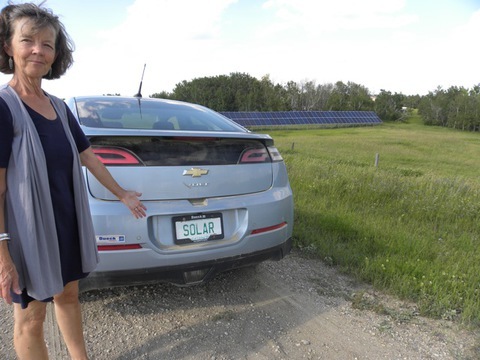
Photo courtesy of Lynn Oliphant
Sun shines on the Prairie provinces more often than anywhere else in Canada. That's what inspired retired University of Saskatchewan professor Lynn Oliphant to start taking advantage of this untapped resource. Oliphant, who lives outside Saskatoon with his wife, Rhonda Shewfelt, is a lifelong sustainable technologies advocate and adopter, but the decision to install solar panels on his property two years ago was as much a matter of economics as environmentalism.
"We're already getting a five per cent return on our investment," Oliphant told me over the phone. "If electricity rates continue to go up, that could become a 10 per cent return."
Oliphant said the biggest challenge in using the sun to heat and power his home has been figuring out what to do with the excess power. Unlike provinces such as British Columbia and Ontario, where net metering and feed-in-tariff policies provide a financial reward to households that produce more power than they use, solar homes in rural Saskatchewan simply pour their excess electricity into the provincial grid for free. To use excess power after it is produced -- such as after the sun goes down -- Oliphant must pay GST on the power he takes back from the grid, in effect, paying for power his own solar panels generated.
To get around this problem, he opted to invest in a means of putting the excess electricity to work. Although a home battery system would have served as a useful backup in the event of a power outage on the provincial electricity grid, Oliphant opted for something equally practical but a lot more fun.
After doing online research, Oliphant located and bought a used Chevrolet Volt in Vancouver. His decision to buy outside of Saskatchewan was motivated by better availability of electric vehicles in provinces with policies to support them. B.C., Ontario and Quebec offer residents financial rebates on new electric vehicle purchases, the largest of which are Ontario's -- up to $14,000 on the new Chevy Bolt, a pure electric vehicle that has a range of around 400 kilometres on a full charge. Sellers of used vehicles factor these savings into resale prices, meaning Oliphant got a great deal in Vancouver and fuelled the drive home partly using the money he saved -- when he wasn't riding purely on electrons.
The Volt is a plug-in hybrid vehicle that stores enough battery power to travel up to 70 kilometres on electricity alone. When the car runs out of battery power, an internal combustion engine kicks in to power the wheels and recharge the battery. This allows Oliphant to do most of his daily driving using excess power from his solar panels while providing flexibility to drive beyond the car's range when he needs to.
"It drives like a sports car," Oliphant said. "The acceleration is tremendous. Even when running on straight gas it gets between six and seven litres per 100 kilometres. We believe if we keep the car for 10 years we will have saved over $15,000 in fuel costs alone, even if we were paying for the electricity."
The long-held view of electric vehicles as glorified golf carts is giving way to a realization that they can be exceptionally fun to drive or ride in, as Oliphant assures me his friends and neighbours can attest.
As much as he loves his current ride, Oliphant has his eye on something with a bigger battery. His ultimate goal is to be able to store excess energy in his vehicle and use it as a backup energy source for his home. The technology to do this is new, but he's confident it will be more wildly available soon.
Oliphant's story is an incredible example of the benefits of transitioning to clean energy sources, even in places that don't yet have government incentives in place. Farmers won't be the only ones to take advantage of Saskatchewan's sunny days in the near future.
"I am at a loss to explain why more people aren't moving in this direction simply based on economics let alone the environmental implications of following our current path," Oliphant said.
Hey! Want more DSF? Join David Suzuki on Facebook

January 13, 2017
Five electric car FAQs
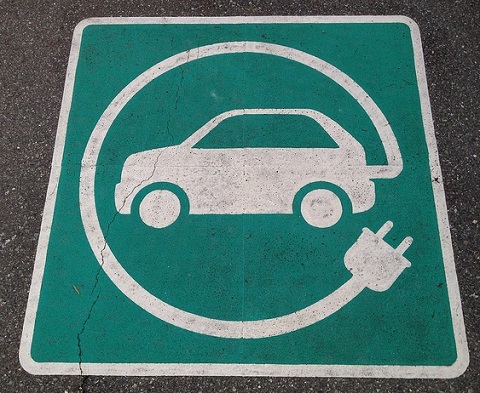
Chargers range in speed. The quickest provides 80 kilometres of range in as little as six minutes. (Credit: Paul Krueger via Flickr)
Like many of you, my family plans to buy an electric car.
I asked for your electric car questions and you came through! Here are answers from Steve Kux, David Suzuki Foundation renewable energy and climate solutions policy analyst:
How much do EVs cost?
Prices vary depending on battery size, make, model and options. They start at about $16,000 for a smart EV with a battery range of around 110 kilometres, to $100,000-plus for a fully equipped luxury model. The Nissan Leaf starts at about $32,000 -- before subtracting government incentives -- with a range of up to 172 kilometres. The first EV with mass consumer appeal is anticipated to be the Chevrolet Bolt EV (sales start in 2017). It starts at almost $43,000 with a range of 383 kilometres.
What's the lifespan of an EV battery?
Most manufacturers offer a warranty on their batteries for 10 years. Warranties guarantee that the range will not degrade significantly. EVs use lithium ion batteries like those found in laptops and cellphones. Over time, performance can become an issue if batteries are routinely overcharged or completely drained. Most manufacturers build programming into their cars to protect the battery from overcharging.
Tip: Avoid completely draining the battery.
Where can you charge EVs?
Charging stations are expanding at an incredible rate, thanks to investments and policies from all levels of government, companies whose entire business is providing chargers and automakers growing the network.
Chargers range in speed. The quickest provides 80 kilometres of range in as little as six minutes. More typical chargers can provide an 80 per cent charge in about 30 minutes, depending on the size of the battery. AND drivers can refuel at home or at work -- where experts predict most people will.
Tip: Look for websites that map charging stations or check your local community centre.
Are EVs easy to find?
EVs are rare in Canada. Automakers have been slow to adopt the new technology and we lack government policies that focus on increasing supply. Quebec recently became the first province to adopt a zero-emission vehicle standard, requiring car manufacturers to ensure a growing percentage of new vehicle sales are EVs each year! This policy is modelled after a similar regulation in California, since adopted by nine other states. Expect availability to increase as mass-produced models like the Bolt and Tesla Model 3 become available in 2017.
Tip: Check used car lots and listings, too.
Are EVs good cars?
EV owners find them fun to drive. Electric motors are able to instantaneously transfer energy from the battery to the wheels rather than waiting for fuel to travel to the engine, turn a piston and transfer that energy to the wheels. So EVs have remarkable acceleration. The Bolt, for example, can reach 96 km/h (60 m.p.h.) in 6.5 seconds, about as fast as a supercharged Ford Mustang, according to NBC news. EVs are also almost silent!
Canada is increasingly urban. Many of us can forgo owning a car in favour of walking, cycling and public transit. For those who remain car-bound, EVs are something worth getting excited about.
What else would you like to know about EVs? (I could feature your question in a future blog. Subscribe to my monthly digest so you don't miss the answer!)
Sincerely,
Lindsay Coulter, a fellow Queen of Green
Hey! Want more DSF? Join David Suzuki on Facebook

David Suzuki's Blog
- David Suzuki's profile
- 247 followers


